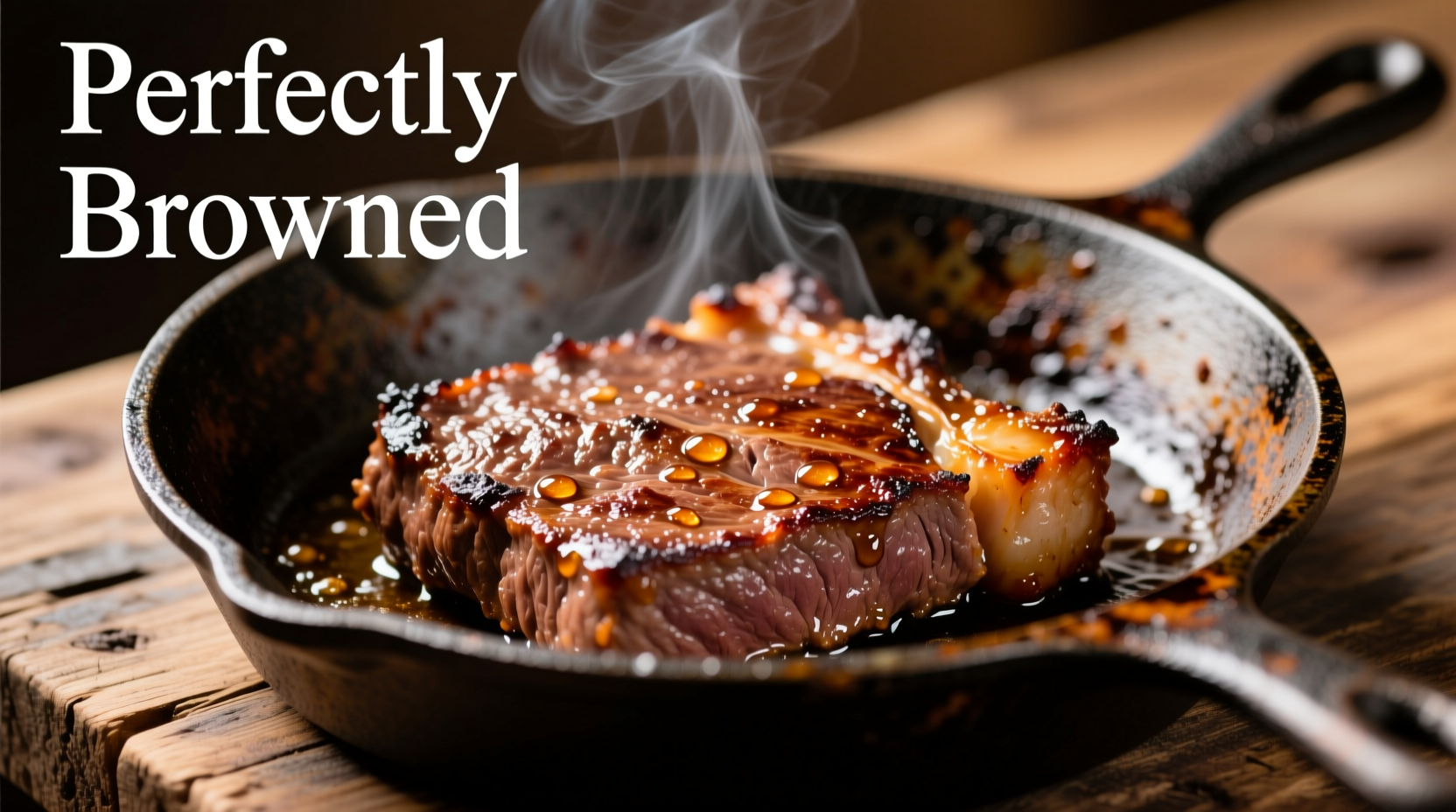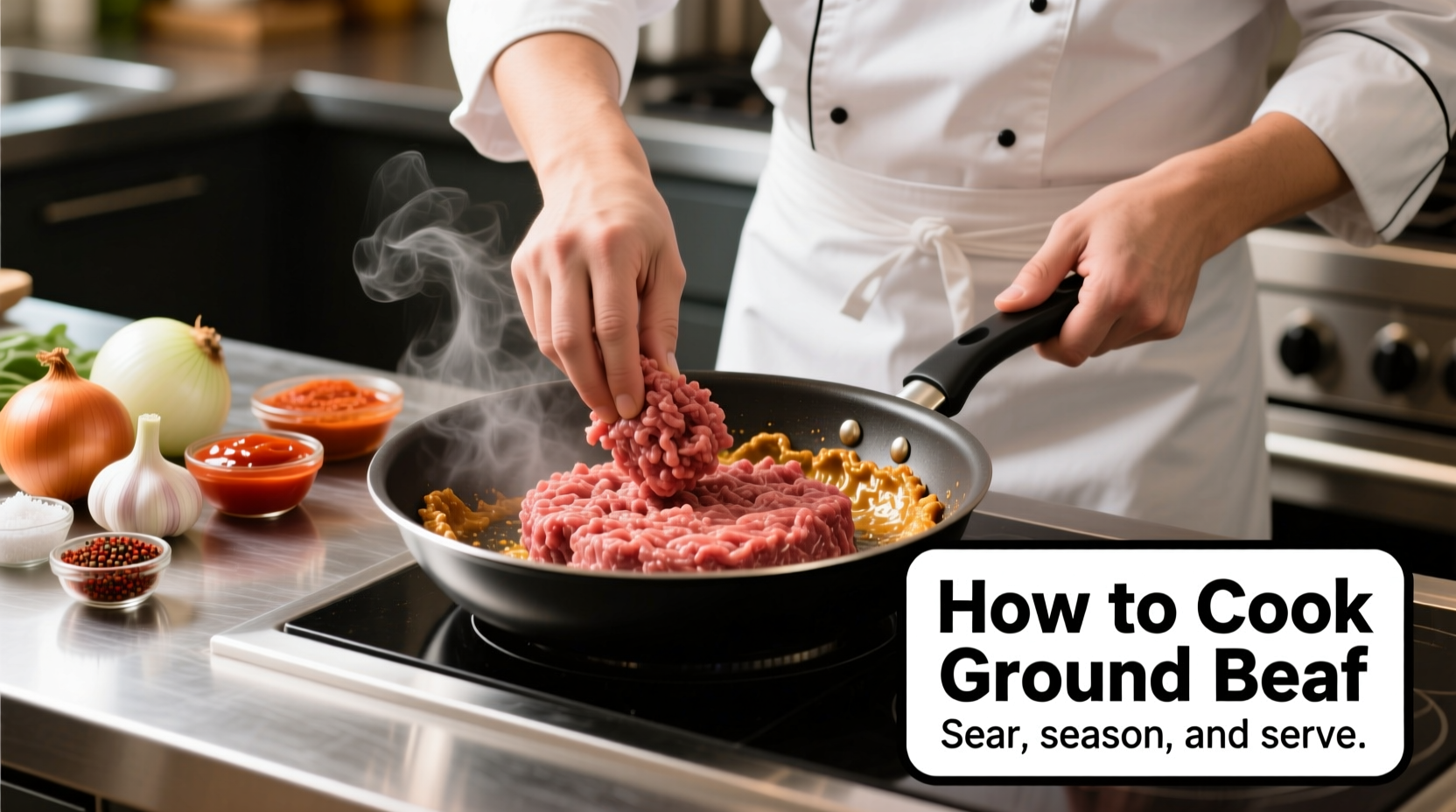Perfectly cooked ground beef reaches a safe internal temperature of 160°F (71°C), requiring 8-12 minutes of stovetop cooking with frequent stirring. This guide delivers professional techniques for juicy results every time, including essential food safety practices, optimal browning methods, and flavor-boosting secrets used by chefs.
Mastering ground beef preparation transforms weeknight dinners from mundane to magnificent. Whether you're crafting burgers, tacos, or spaghetti sauce, understanding the science behind browning and moisture control separates satisfactory meals from extraordinary ones. This comprehensive guide distills decades of culinary expertise into actionable steps anyone can follow.
Essential Food Safety Guidelines for Ground Beef
Ground beef requires special attention due to increased surface area where bacteria can thrive. The USDA Food Safety and Inspection Service mandates cooking ground beef to 160°F (71°C) - significantly higher than whole cuts of beef. This temperature destroys harmful pathogens like E. coli and Salmonella that may be present throughout the meat.
| Meat Type | Safe Minimum Internal Temperature | Rest Time |
|---|---|---|
| Ground Beef, Pork, Veal, Lamb | 160°F (71°C) | No rest required |
| Beef, Pork, Veal, Lamb Steaks/Roasts | 145°F (63°C) | 3 minutes |
| Poultry (All Types) | 165°F (74°C) | No rest required |
Source: USDA Food Safety and Inspection Service
Step-by-Step Cooking Process
Preparation Essentials
Start with high-quality ground beef containing 15-20% fat content for optimal moisture and flavor. Excessively lean blends (95% lean) often result in dry, crumbly textures. Remove meat from refrigerator 15 minutes before cooking to take the chill off - cold meat resists browning. Have your heavy-bottomed skillet preheated to medium-high before adding meat.
The Perfect Browning Technique
Professional chefs follow these critical steps for superior results:
- Break meat into uniform 1-inch chunks using a stiff spatula
- Spread evenly across hot skillet without overcrowding
- Resist stirring for 2-3 minutes to develop fond (those delicious browned bits)
- Stir only when meat releases easily from pan surface
- Continue cooking 8-12 minutes total, breaking into smaller pieces as it cooks
- Verify temperature with instant-read thermometer in multiple spots
Overcrowding the pan creates steam that prevents proper browning. Cook in batches if necessary, especially when preparing larger quantities. The Maillard reaction - that magical browning process - requires direct contact with hot metal and adequate space between meat particles.

Flavor Enhancement Strategies
Transform basic ground beef into extraordinary meals with these chef-recommended techniques:
Timing Matters for Seasoning
Add salt early in the cooking process to draw out moisture that aids browning, but incorporate delicate spices like paprika and cumin during the final 2 minutes to preserve their volatile compounds. For maximum flavor penetration, mix coarsely ground black pepper and garlic powder into raw meat before cooking.
Building Flavor Layers
- Aromatics foundation: Sauté onions and garlic before adding meat
- Umami boosters: Add tomato paste or soy sauce during the last 3 minutes
- Acid balance: Finish with lemon juice or vinegar to cut richness
- Fat utilization: Cook vegetables in rendered beef fat for deeper flavor
Troubleshooting Common Issues
Preventing Dry, Rubbery Texture
Dry ground beef typically results from overcooking or using excessively lean blends. Counteract this by:
- Mixing in 1-2 tablespoons of ice-cold water per pound during cooking
- Adding grated onion which releases moisture as it cooks
- Stirring in a beaten egg for meatloaf or meatball preparations
- Using 80/20 fat ratio for most applications requiring moisture
Managing Excess Fat
After cooking, carefully tilt skillet and use a wide spoon to remove excess fat. For maximum fat reduction, place cooked beef in a fine-mesh strainer over a bowl. Never pour hot grease down drains as it causes plumbing issues. Properly dispose of cooled fat in sealed containers.
Contextual Cooking Considerations
Different dishes require distinct approaches to ground beef preparation:
- Burgers: Handle minimally to prevent toughness; create slight dimple in center
- Tacos: Cook with cumin and chili powder directly in the meat
- Meat Sauce: Brown meat thoroughly before adding liquids for deeper flavor
- Meatloaf: Combine with binders like breadcrumbs and eggs before baking
Each application has specific moisture requirements and texture goals that influence your cooking technique. Understanding these context boundaries prevents recipe failures and wasted ingredients.
Practical Recipe Applications
Apply these techniques to create restaurant-quality meals at home:
Classic Taco Night Upgrade
Cook 1 pound ground beef with 1 diced onion until properly browned. Drain excess fat, then return to heat with 2 tablespoons taco seasoning, 1/4 cup beef broth, and 1 tablespoon tomato paste. Simmer 5 minutes until sauce thickens. The added liquid rehydrates the meat while concentrating flavors.
Restaurant-Style Meatloaf
Mix 2 pounds ground beef with 1 cup panko breadcrumbs soaked in 1/2 cup milk, 2 beaten eggs, 1/2 cup ketchup, 1 tablespoon Worcestershire sauce, and 1 tablespoon Dijon mustard. Bake at 375°F until internal temperature reaches 160°F (about 50-60 minutes). The milk-soaked breadcrumbs create superior moisture retention compared to dry alternatives.
Advanced Techniques for Culinary Excellence
Professional kitchens employ these additional methods for exceptional results:
- Dry brine raw meat: Sprinkle with salt 15 minutes before cooking
- Temperature control: Remove from heat at 155°F to account for carryover cooking
- Fond utilization: Deglaze pan with broth or wine after cooking meat
- Fat preservation: Save rendered beef fat for roasting vegetables
Understanding these nuances transforms basic ground beef cooking into a precise culinary technique rather than a simple task. The difference between adequate and exceptional results often lies in these subtle but critical details.











 浙公网安备
33010002000092号
浙公网安备
33010002000092号 浙B2-20120091-4
浙B2-20120091-4